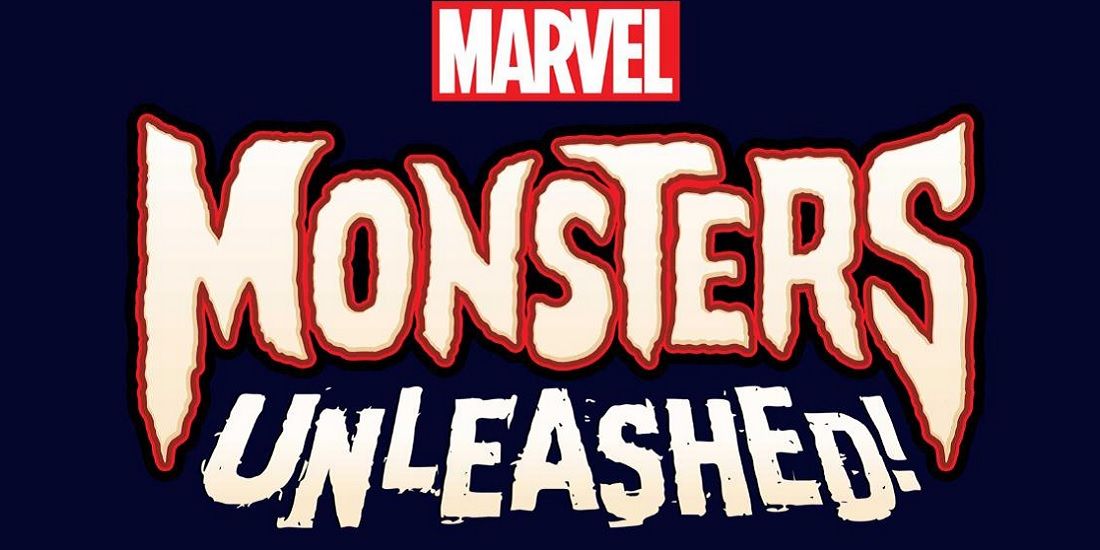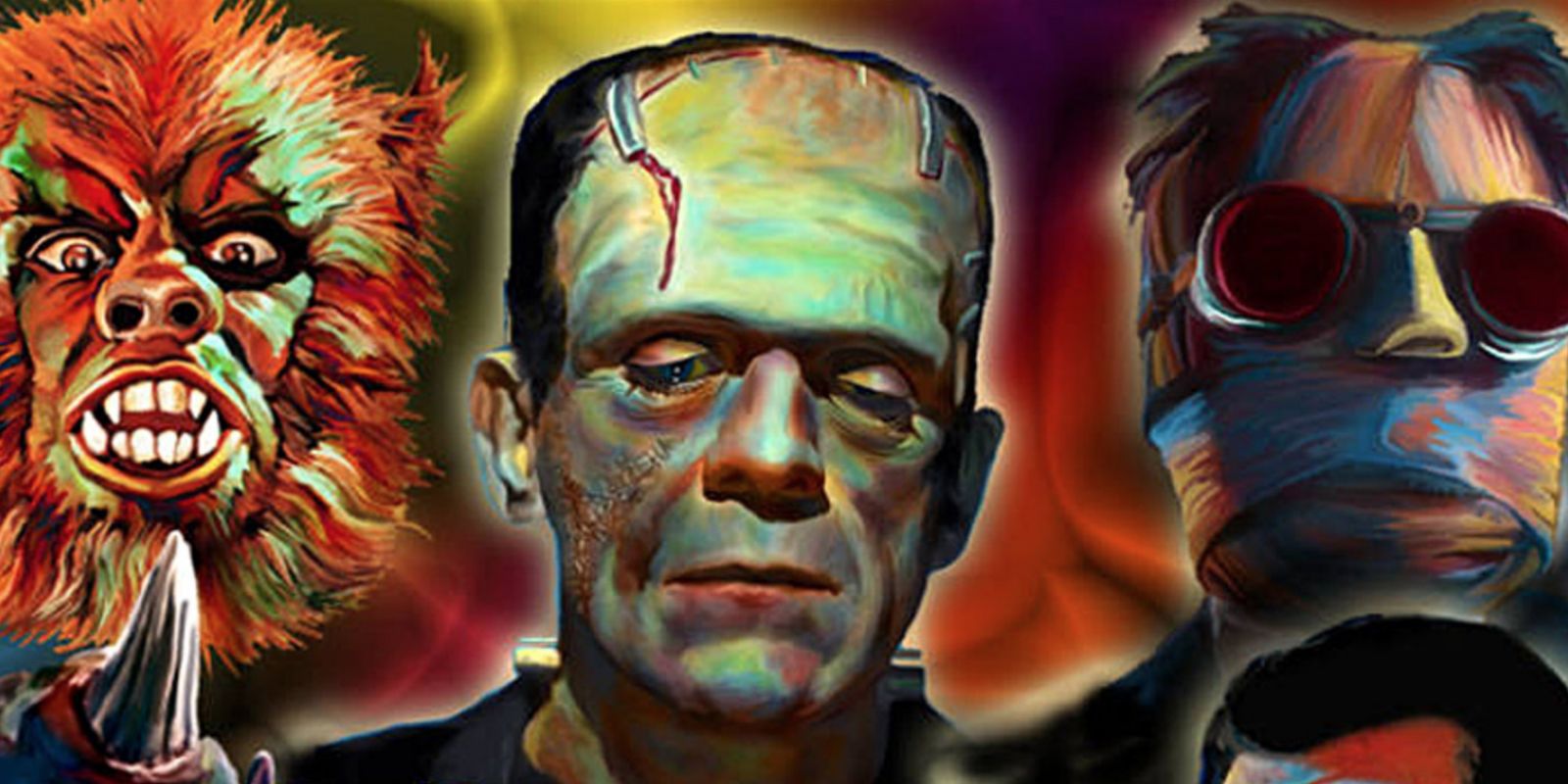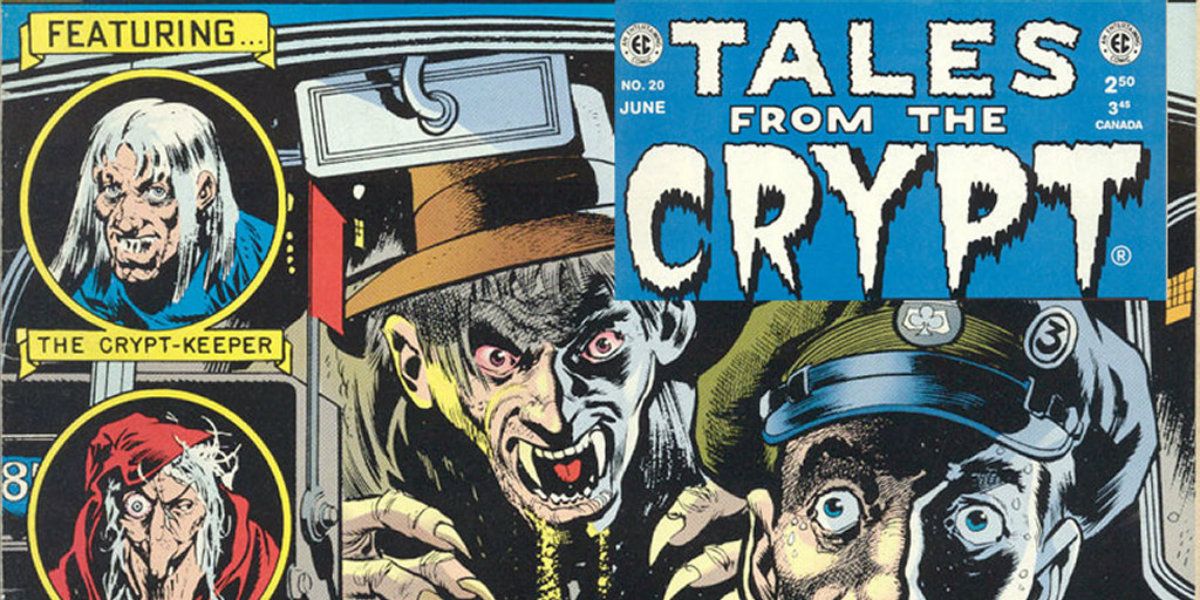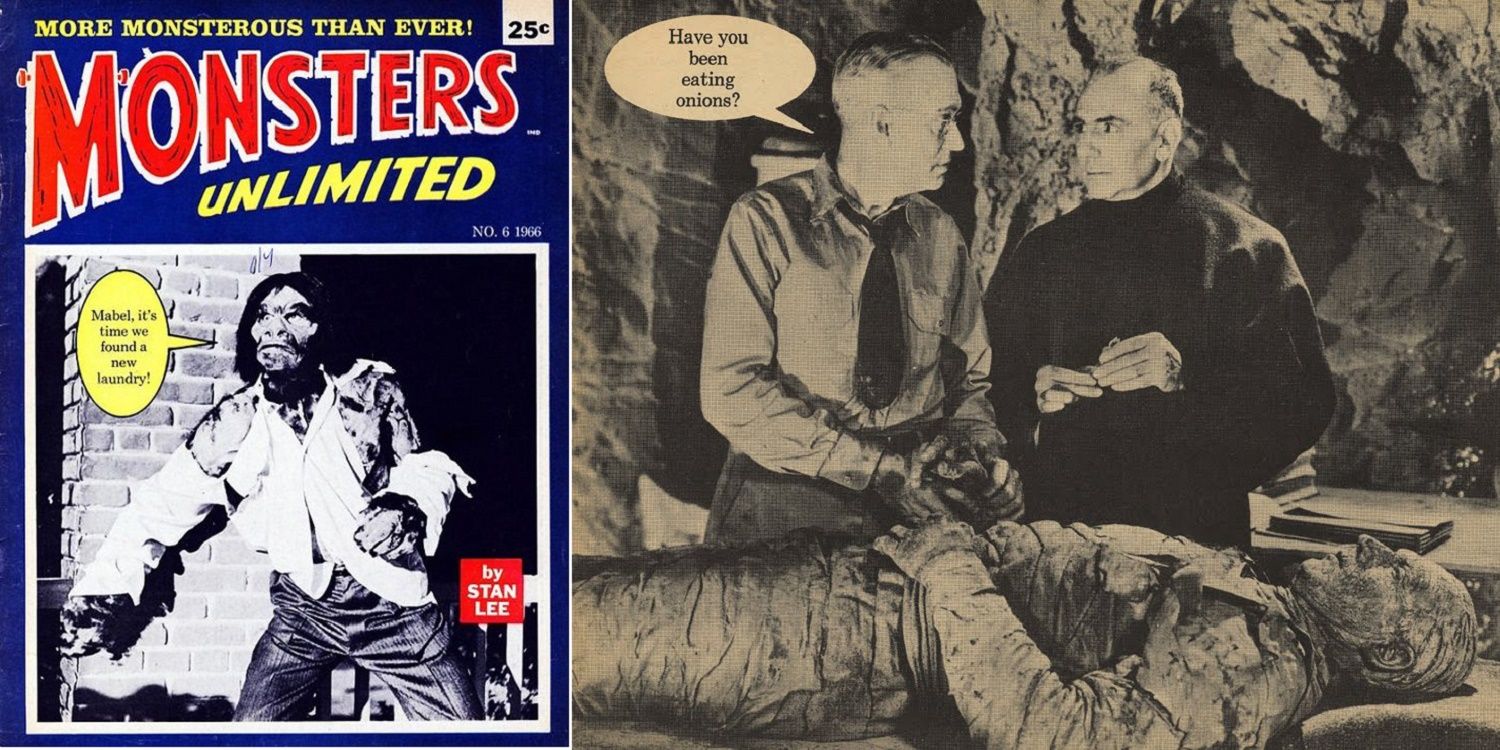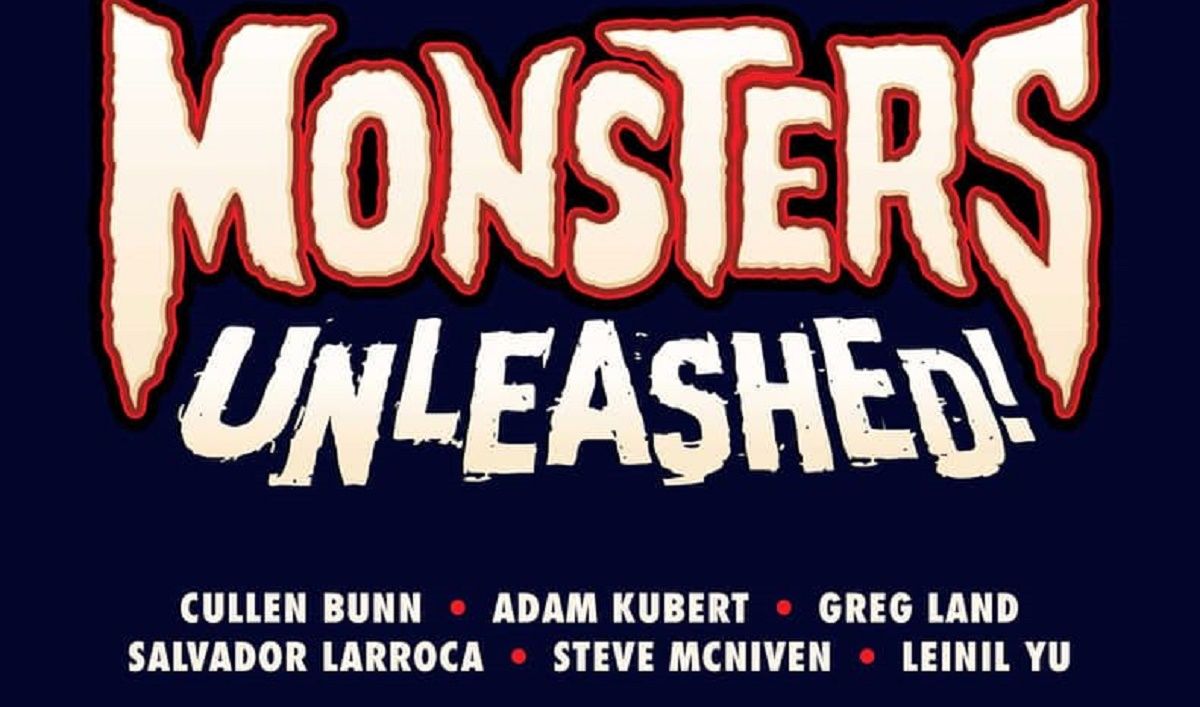For a week, Marvel tantalized true believers with a series of teasers bearing the cryptic letters ‘MU.’ Each new poster bore the name of one of the House of Ideas' top authors as of late, Cullen Bunn (Uncanny X-Men, Deadpool), along with at least one notable artist. Finally, on September 1, the comic giant revealed the two curious words behind their enigmatic acronym stood for Monsters Unleashed!
Perhaps not instantly recognizable to some, the name is a throwback, at least in name if not in concept, to the movie magazines of yore which spawned modern film rags and websites like Fangoria, Gorezone, and Bloody Disgusting. Monsters Unleashed! was Marvel’s attempt to capture the monster movie craze of the late 60s and early 70s. But how did the iconic comic company get involved in the horror business, and more importantly, why are they bringing back one of their iconic, if short-lived, creature features?
Everyone Loves a Good Scare
Humans have always been attracted to the darker side of life, as witnessed by the morbid tales of history. Since the invention of movable type, our fears have made their way into the public realm, as witnessed by the gory depictions accompanying early news flyers from the 17th century. During the Victorian period, the workforce dynamic changed from agrarian to industrialized, and literacy grew more commonplace. As a result, publishers in England took advantage of the trend, serializing literature and true crime shockers into digestible and affordable bites. They sold these pamphlets for a cent, a price many workers of the era could afford.
The popularity of the weekly ‘penny dreadfuls’ spawned early special interest magazines. Cheap slicks like Boys of England featured novels on an installment plan, as well as news blurbs and topical articles. The success of these periodicals encouraged publishers in the US, who fed the population's hunger for shocking news, dark mysteries, and horror content with dime novels, or pulps (so-called because of the low cost of printing on pulped wood paper). The rise of cheap-thrill paperbacks and horror comics mirrored the proliferation of other frightful mediums, including the Theater of Grand Guignol.
The Parisian stage show, which reveled in gruesome depictions of horrifying and carnal acts, influenced early filmmakers to push boundaries in their own works. In the late 20s and early 30s, before self-censorship cut the meat from cinema, studios brought dozens of fright films, gritty film noirs, and tense thrillers to the screen. Universal’s own terror tale adaptions like Dracula and Frankenstein were particularly significant, due to their widespread and lasting popularity. Their on screen depictions of classic literary fiends inspired sequels, spinoffs, and spoofs by the droves. In addition, the upsurge of horror also spread to other media, influencing music, fiction, and another rapidly popularizing format, comics.
The Dawn of the Publishing Dead
While monster movies crowded the collective consciousness of the 30s and 40s, the sequential art was receiving its own renaissance – in the collected format of comic books. Early publishers like Prize and Avon brought terror tropes to their sequential works, including titles like New Adventures of Frankenstein and Eerie. Their skyrocketing popularity set the stage for the fright boom of the 40s and 50s, when publishers like William Gaines’s Educational Comics pushed the boundaries of pop culture. Distinctive magazines like The Crypt of Terror (later Tales from the Crypt) and Vault of Horror brought twisted tales to horror hungry teens and adults en mass.
Around the same time, an upcoming comic purveyor called Timely – which fell under the aegis of a certain Marvel Publishing Company – began turning out a few familiar faces. Characters like Namor and Captain America, who went on to long lives as superheroes, began their superhuman do-gooding against uncommon criminals. But during this era, they increasingly faced down hordes of monster-inspired villains (often modeled off America’s World War II adversaries). In the late 40s, the company took a page from DC, EC and others, producing its own scare fare like Marvel Mystery Comics, Adventures into Terror – which later begat Strange Tales (Doctor Strange) and Fantasy Masterpieces (which helped popularize Fin Fang Foom). The scarefest lasted until 1954 when, widespread fears about comics causing juvenile delinquency lead to the creation of the Comics Code Authority and the dismantling all but the most wholesome fright fare.
Despite the demise of the horror comic industry, science fiction and horror movies stormed the theaters in the 50s, thanks in part to Atomic Age fears and monster movie re-imaginings from British film studio Hammer. To capitalize on the renewed popularity, editor and writer Forrest J. Ackerman and Warren Publishing put out a one-shot magazine which changed film fandom forever. Famous Monsters of Filmlands wasn’t the first fright flick periodical, but it became a beloved institution thanks to Ackerman’s devotion to the monsters of yesteryear – as well as covering scary movies of the era. His attachment to the Universal classics of his childhood was infectious, catching on with nostalgic adults and escapist teens.
Marvel Catches Monster-itis
After Spider-Man successfully defied the Comics Code Authority in the early 60s, the self-censors began to relax their standards a little. As a result, narcotics (at least when drugs were bad, mkay) and supernatural fiends like Dracula could make their triumphant return to sequential art. Marvel and other publishers rapidly re-implemented horror comics, while also trying to muscle in on the popularity of Famous Monsters and other film fan spinoff mags.
Marvel's first foray into the movie rag business began in earnest with Stan Lee’s Monsters to Laugh With/Monsters Unlimited in the mid-60s. However, Marvel’s takeoff failed to capture the wacky wit of Ackerman’s creep show cavalcade, something which came from his ingrained love of the films he lampooned. As a result, their series disbanded after seven issues. Not discouraged by the limited success of their first outing, Marvel headed back into the horror business in earnest in the 70s.
After the CCA relaxed its standards yet again, Marvel cranked out a host of horror magazines under the imprint Marvel Monster Group – which featured a cutesy logo of Frankenstein’s monster reading a book. Marvel mobbed the newsstands with their latest genre offerings, pumping out 11 genre titles in the early to mid 70s, including the Monsters Unlimited reboot Monsters Madness, Dracula Lives, Haunt of Horror, and Monsters of the Movies. With so many titles dealing with scary subject matters, the publisher sought a fresh angle to keep readers interested. So they took a ‘marvel’ approach and included original comic features.
A Short but Frightfully Fun Life
Dubbed Monsters Unleashed!, Marvel's latest crack at the horror movie periodical launched in 1973, bringing readers a new adventure each week from freaky favorites like Man-Thing and B-grade heroes like Tigra. Every issue also featured original tales from reimagined Universal creeps like Werewolf by Night, and Frankenstein’s Monster. The Monster Group also took advantage of the loosening grip of the CCA, as well as their lack of authority in the magazine realm, by reprinting fun black and white comics from before the Code.
In addition to the original stories, fresh comics (featuring great art from Sal Buscema and others), and reissues, the fright rag also printed pictures and news from the latest fright films and, of course, nostalgic shout outs to the classic creature features. Each cover highlighted a gruesomely gorgeous painting from some of the era’s major talents, including Jose Antonio Domingo, Gray Morrow, Boris Vallejo, and Neal Adams. Marvel’s post-Stan Lee Editor-in-Chief Roy Thomas guided the first six issues, before handing the title over to Tony Isabella and Don McGregor for the final five issues.
Unfortunately, as horror sales flagged in the creepy cottage industry, Unleashed! also began to lose steam. By 1975, the title published its eleventh and final issue (not including the annual), and Marvel’s Monster Group closed its doors not long afterwards. Marvel would continue to dabble in the fright realm, releasing one-offs and terror-tinged tales from old favorite and new characters, but Marvel’s efforts fell victim to the waning interest in horror properties brought about by souped-up blockbusters of the late 70s.
Nevertheless, many Marvel fans have fond memories of the mixed media outing, between young readers during the era and others who devoured dog-eared copies at their local libraries or in parent's attics. While the buzz over Marvel’s recent teasers may have thrown many fans off, in part due to their own wishful thinking, the rebirth of Monsters Unleashed! is just as intriguing as the return of the Fantastic Four or Wolverine.
Unleashed! Once More
Spurred on by the success of DC’s Vertigo imprint, the Big Two have pulled once-separated horror elements further into their mainstream comics. Spooky favorites like Ghost Rider – especially since his role on Agents of S.H.I.E.L.D was announced – have experienced resurgences as of late. In addition, the multimedia success of horror books like The Walking Dead and iZombie proves that eerie tales are undead and well in comic book land. Also, as the Marvel Cinematic Universe is about to get more esoteric with Doctor Strange’s arrival, it’s no surprise the comic purveyor chose to revisit some of their old haunts. What they have planed with Monsters Unleashed!, however, remains unclear.
While the publisher won’t likely jump back into the monster movie magazine business, Unleashed! does have a strong nostalgic bent. Its grainy black and white pages and vibrant covers evoke memories of the creepy creatures who saw light of day (or darkness of night) within its pages. Reasonable speculation seems to indicate that the series will consist of five titles. With Cullen Bunn on writing duties, it would also make sense that each issue or title is drawn by one of the fine artists attached to the product, including Leinil Yu (New Avengers, Fantastic Four), Steve McNiven (Civil War, Wolverine), Adam Kubert (Avengers & X-Men: Axis), Greg Land (Uncanny X-Men), and Salvador Larroca (Death of Wolverine: The Weapon X). It’s also possible that the new Unleashed! title will create a blanket imprint which expands or redevelops classic creepers like Man-Thing, Frankenstein’s monster, and Werewolf at Night, as its predecessor did.
If Unleashed! does feature original stories by some of Marvel's classic monsters, with any luck it will also act as a gateway to bring other supernatural characters like Moon Knight, Doctor Strange, Morbius, the Howling Commandos of S.H.I.E.L.D. and Blade into the stories. Most of all, at least for this old horror hound, it would be amazing if their new terror title could conjure up those old feelings: huddling beneath the blankets with a flashlight clutched in trembling hands, afraid to read on but too curious to stop. After years of living in the mundane, they may never be able to bring back that wonderful dread. But if Bunn and Co. can raise a little gooseflesh or at least tell a good story, they'll have succeeded handily.
What are your hopes for Monsters Unleashed!? Who would you like to see cross its creepy pages?
Next: Marvel's Mysterious MU Has Been Revealed
Marvel's Monsters Unleashed! hits newsstands and tablets in January of 2017.

